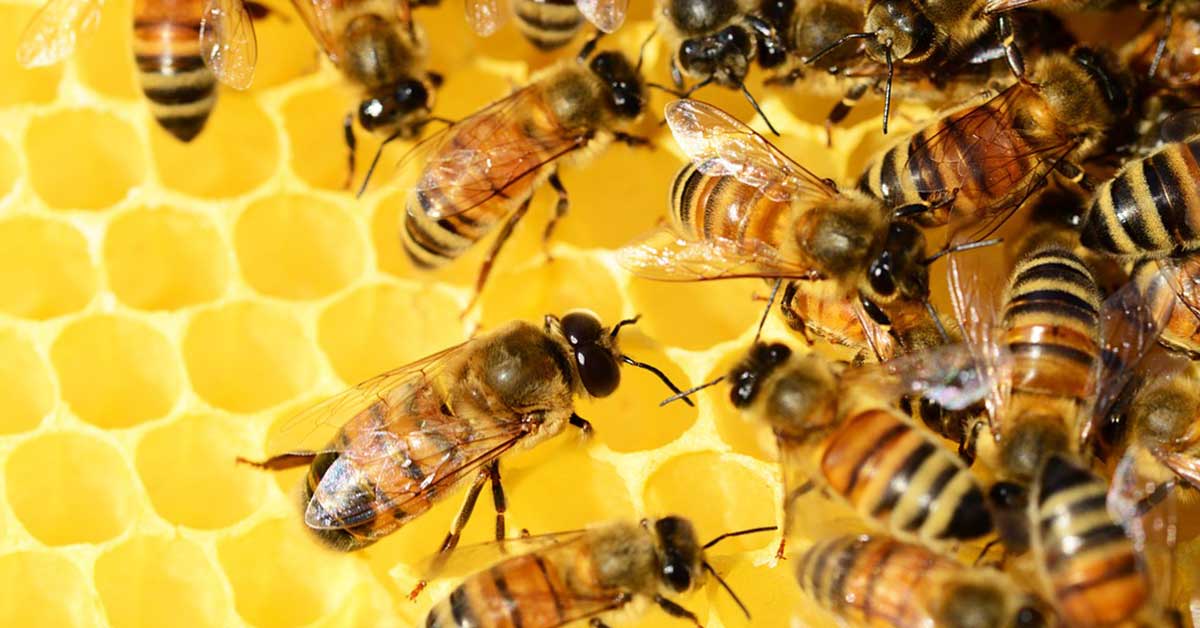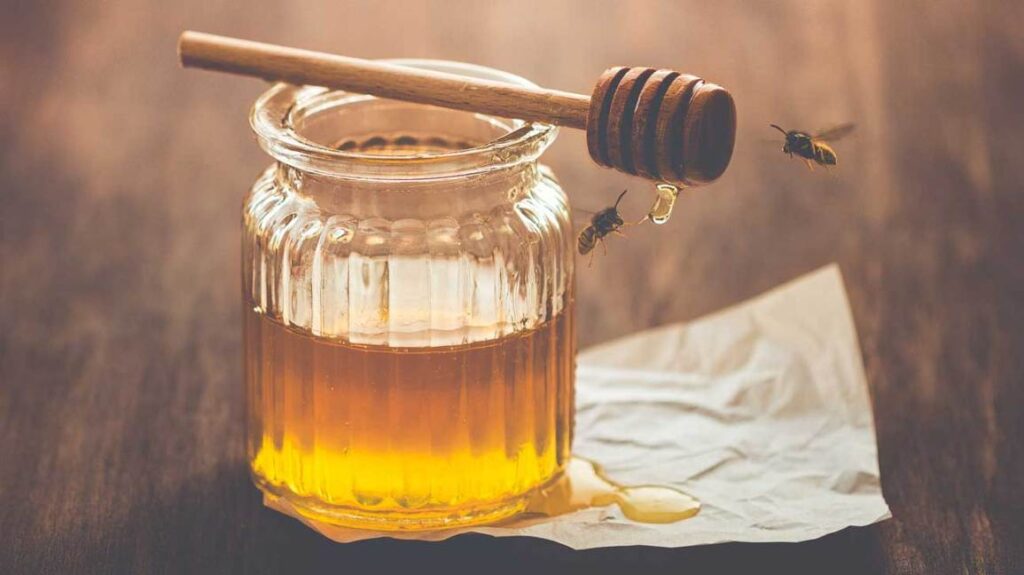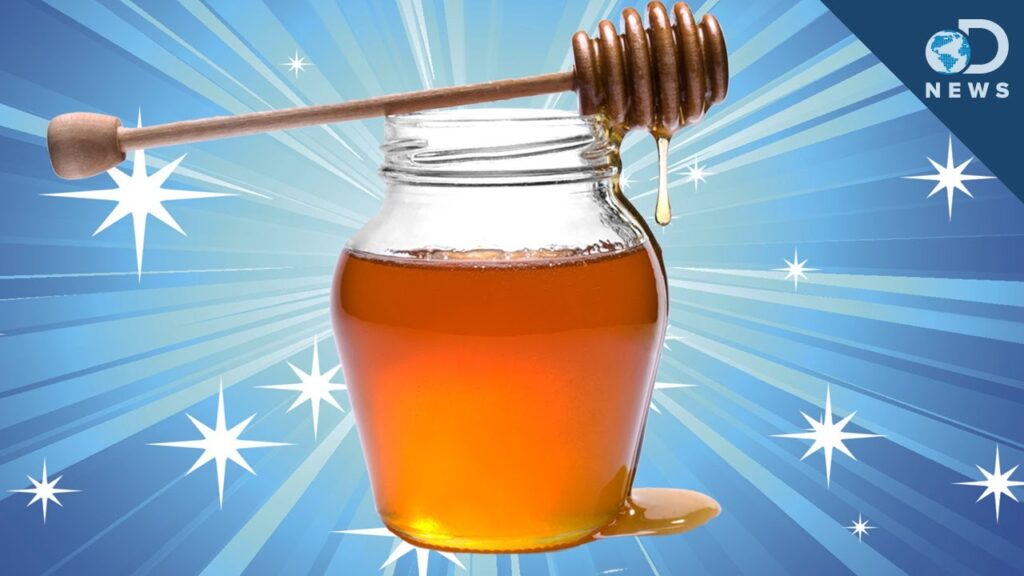
Have you ever wondered if honey lasts forever? Well, we have some news for you. Contrary to popular belief, honey is not immortal. In fact, its shelf life may surprise you. From the ancient tombs of Egypt to your kitchen cabinet, honey has been a staple in human history for centuries. But just how long can this golden elixir really last? In this article, we will explore the fascinating truth behind honey’s longevity and debunk the myth of its immortality. Get ready to have your mind buzzed with this sweet revelation!

The Myth of Honey’s Immortality
Honey has long been cherished for its sweet taste and remarkable longevity. Ancient folklore and popular belief have often perpetuated the myth that honey is immortal, with some even claiming that honey found in ancient Egyptian tombs is still perfectly edible. However, the truth is that honey does have a shelf life, and its quality can deteriorate over time. In this article, we will delve into the factors that affect the shelf life of honey, explore the different types of honey and their lifespans, discuss proper storage methods to maximize longevity, and uncover the signs of spoiled honey. Let’s uncover the truth behind this legendary myth and learn how to make the most of this delightful golden nectar.
Understanding the Shelf Life of Honey
Factors Affecting Honey’s Shelf Life
Several factors influence the shelf life of honey, including moisture content, pH levels, temperature, and the presence of enzymes. These elements contribute to the stability and longevity of honey, determining whether it remains preserved for months or even years.
The Role of Moisture Content
Moisture content plays a crucial role in honey’s shelf life. Honey typically has a low moisture content, averaging around 17%. This relatively low moisture content inhibits the growth of bacteria and yeast, preventing spoilage. Honey with higher moisture levels, known as high-moisture honey, is more prone to fermentation and spoilage. By maintaining proper moisture levels, honey can endure over time without compromising its quality.
The Importance of pH Levels
Honey has a naturally acidic pH level, usually ranging between 3.2 and 4.5. This low pH makes it difficult for bacteria and other microorganisms to survive and multiply, contributing to honey’s long shelf life. The acidity acts as a natural preservative, ensuring that microorganisms cannot thrive and spoil the honey. It is this unique characteristic that allows honey to remain preserved for extended periods.
The Impact of Temperature
Temperature plays a significant role in honey’s shelf life. Extreme temperatures, both hot and cold, can negatively affect the quality and longevity of honey. High temperatures can lead to enzymatic activity, accelerating the breakdown of honey’s beneficial compounds and reducing its quality. Exposure to freezing temperatures, on the other hand, may cause crystallization, altering the texture and consistency of the honey. Maintaining a stable and moderate temperature is essential for preserving the integrity of honey.
The Influence of Enzymes
Enzymes naturally present in honey contribute to its long shelf life. Certain enzymes, such as glucose oxidase, produce hydrogen peroxide in honey, creating an antimicrobial effect that inhibits the growth of bacteria and other microorganisms. These enzymes play a vital role in preserving honey’s quality and preventing spoilage.
Different Types of Honey and Their Lifespan
Honey comes in various types, each with its unique characteristics and lifespan. From raw honey straight from the hive to crystallized honey with a distinct texture, understanding the different types can help us appreciate their individual qualities and how long they can last.
Raw Honey
Raw honey, as its name implies, is unprocessed and unfiltered honey straight from the beehive. It retains all the natural enzymes, pollen, and other beneficial compounds that are often removed during processing. Due to its minimal processing, raw honey tends to have a longer shelf life compared to other types. When stored properly, raw honey can last indefinitely, although its quality may diminish over time.
Pasteurized Honey
Pasteurized honey undergoes a heating process to eliminate any potential pathogens and extend its shelf life. This process involves heating the honey to a specific temperature to kill bacteria, yeast, and other microorganisms. While pasteurizing honey ensures its safety, it can also result in the loss of some beneficial enzymes and antioxidants. Pasteurized honey usually has a shelf life of several years if stored correctly.
Filtered Honey
Filtered honey undergoes a filtration process to remove impurities such as beeswax, bee parts, and pollen. This process gives the honey a clear and smooth appearance but may also eliminate some of the beneficial compounds found in raw honey. Filtered honey typically has a similar shelf life to pasteurized honey, lasting several years when stored properly.
Comb Honey
Comb honey is honey in its most natural form, still contained within the beeswax comb. It is the purest and least processed type of honey available. Due to its minimal processing, comb honey has a relatively short shelf life compared to other types of honey. It is best consumed within a year to fully enjoy its unique flavor and texture.
Crystallized Honey
Crystallized honey, also known as granulated honey, is honey that has solidified into granules. Crystallization occurs when glucose molecules in the honey form crystals, giving the honey a creamy or grainy texture. Despite its altered consistency, crystallized honey is still safe to consume. In fact, the crystallization process can actually prolong the honey’s shelf life by preventing moisture absorption and inhibiting the growth of bacteria.
Storing Honey for Maximum Longevity
Proper storage is essential for maximizing the longevity of honey and ensuring its quality is maintained over time. By following a few simple guidelines, you can enjoy your honey for an extended period without the risk of spoilage.
Choosing the Right Container
Selecting the right container is crucial in preserving honey’s quality. Use containers made of glass, stainless steel, or food-grade plastic to prevent any chemical interaction that could affect the honey. Make sure the container is well-sealed to prevent moisture and air from entering, as these can accelerate the breakdown of honey. It is also important to avoid storing honey in metal containers, as honey may react with the metal and compromise its flavor and quality.
Ideal Storage Conditions
To prolong the shelf life of honey, it is important to store it under proper conditions. Keep your honey in a cool, dark, and dry place away from direct sunlight, excessive heat, and moisture. High temperatures can lead to enzymatic activity and spoilage, while exposure to light can cause the degradation of certain compounds in honey. By providing a stable environment, you can ensure that your honey remains fresh and delicious for an extended period.
Avoiding Contamination
Contamination can significantly affect the quality of honey and reduce its shelf life. When using honey, always ensure that your utensils and hands are clean to prevent introducing any foreign substances into the honey. Avoid double-dipping to minimize the risk of bacterial contamination. Additionally, make sure you tightly seal the container after each use to prevent exposure to air and moisture, which can lead to spoilage.
Proper Labeling and Rotation
Labeling and rotation are important aspects of honey storage. Clearly label each container with the date of purchase or harvest to track its freshness. Rotate your honey stock by placing newer containers at the back and using the older ones first. This way, you can ensure that honey is consumed within a reasonable time frame, avoiding the risk of spoilage due to extended storage periods.

Signs of Spoiled Honey
While honey has a relatively long shelf life compared to many other foods, it is not entirely immune to spoilage. Here are some signs to look out for when determining whether honey has gone bad:
Mold Growth
Mold growth is a clear indication that honey has spoiled. Mold typically appears as dark spots or tendrils on the surface of the honey. If you notice any mold, it is recommended to discard the entire batch of honey, as it can be harmful if consumed.
Fermentation
Fermentation occurs when the sugar in honey is converted into alcohol and carbon dioxide by yeast. Signs of fermentation include fizzy bubbles and an alcoholic aroma. Consuming fermented honey may cause digestive issues, and it is best to discard any honey that exhibits signs of fermentation.
Unpleasant Odor or Taste
Spoiled honey may have an off smell or taste. If your honey has developed an unpleasant odor or tastes different from its usual sweetness, it is an indication that it has gone bad. Trust your senses and err on the side of caution by disposing of honey that doesn’t smell or taste as it should.
Implications for Honey Consumption
Understanding when to discard honey is essential for ensuring food safety and maintaining optimal taste and quality. While honey has a relatively long shelf life, it is not immune to spoilage, and consuming spoiled honey can have negative implications for your health.
When to Discard Honey
As a general guideline, discard honey that exhibits signs of mold growth, fermentation, or an off smell or taste. Even if the honey appears visually fine but displays any of these characteristics, it is best to err on the side of caution and dispose of it. Consuming spoiled honey can lead to foodborne illnesses and digestive discomfort, so it is important to prioritize your health and safety.
Using Spoiled Honey
If you come across a jar of honey that has spoiled, it is best not to consume it. However, spoiled honey can still have various uses. It can be used as a natural skincare ingredient for face masks, body scrubs, or hair treatments. Spoiled honey can also be utilized in gardening as a plant fertilizer or in creating honey-infused vinegars. Get creative and explore alternative uses for spoiled honey, but always remember not to ingest it.

Prolonging the Lifespan of Honey
While honey does have a natural shelf life, there are methods to prolong its longevity and maintain its quality over time. By following a few simple practices, you can ensure that your honey remains fresh and delicious for as long as possible.
Preventing Crystallization
Crystallization is a natural process that occurs in honey, resulting in a solid or semi-solid texture. While crystallized honey is still safe to consume, some may prefer its liquid form. To prevent crystallization, store honey at temperatures between 50°F and 70°F (10°C and 21°C). You can also gently warm crystallized honey by placing the storage container in warm water until it returns to its desired consistency.
Reversing Crystallization
If your honey has already crystallized, there’s no need to worry. You can easily reverse the crystallization process and restore honey to its liquid state. Place the jar of crystallized honey in warm water, ensuring that the water is not too hot to prevent any damage to the honey’s beneficial compounds. With gentle heating, the honey will gradually liquify, allowing you to enjoy its delightful texture once again.
Preserving Honey in History
Honey has been revered for centuries, not only for its delightful taste but also for its preservation properties. Throughout history, different civilizations have developed methods to preserve honey to ensure its availability during times of scarcity and for extended periods. Let’s explore some notable instances of honey preservation:
Ancient Egyptian Honey
Ancient Egyptians were known for their advanced honey preservation techniques. They stored honey in clay pots sealed with beeswax, protecting it from moisture and air. The tombs of pharaohs contained jars of honey that have been preserved for thousands of years, providing fascinating insight into the longevity of honey when stored properly.
Honey in Ancient Greece
In ancient Greece, honey was highly valued not only as a food but also as a sweetener and preservative. Honey played a crucial role in the preservation of fruits, making it possible to enjoy them during the winter months. By soaking fruits in honey, the Greeks were able to extend their shelf life and create delectable preserved treats.
Medieval Honey Preservation
During medieval times, honey was prized for its ability to preserve other foods. It was commonly used as a natural preservative for meat, fruits, and even vegetables. By coating food items with a layer of honey, the medieval people could effectively protect them from spoilage and enjoy them for a longer period.

Scientific Studies on Honey’s Shelf Life
Modern scientific studies have shed light on the composition and microbial growth in honey, providing further understanding of its shelf life and preservation properties.
Understanding Honey’s Composition
Scientists have analyzed the composition of honey and its various components that contribute to its longevity. The low moisture content, acidic pH, and presence of enzymes and antioxidants have been identified as the key factors responsible for inhibiting microbial growth and preserving honey over time.
Microbial Growth in Honey
Research has revealed that the acidity and high sugar content of honey create an inhospitable environment for many microorganisms. While honey can occasionally contain spores of certain bacteria or yeast, their growth and multiplication are effectively inhibited by honey’s natural preservation properties. However, it is still essential to store honey properly to minimize the risk of microbial contamination.
Conclusion
Honey, though not immortal as the myth suggests, possesses impressive preservation properties that have captivated civilizations throughout history. By understanding the factors that influence honey’s shelf life, recognizing the different types of honey and their lifespans, and implementing proper storage methods, we can ensure that honey remains a delightful and safe addition to our culinary repertoire. So the next time you enjoy a spoonful of honey, savor its sweetness and appreciate the intricate science behind its longevity.
